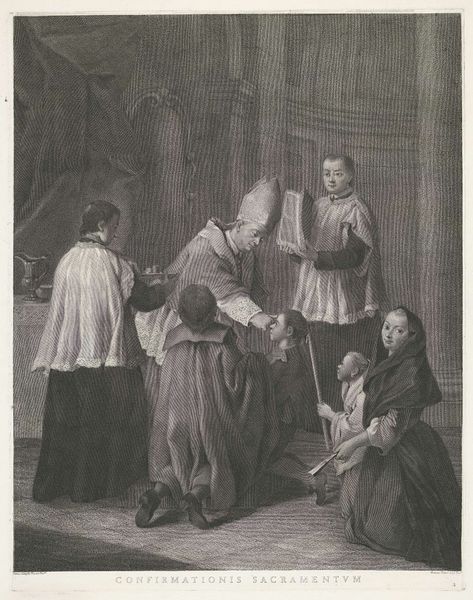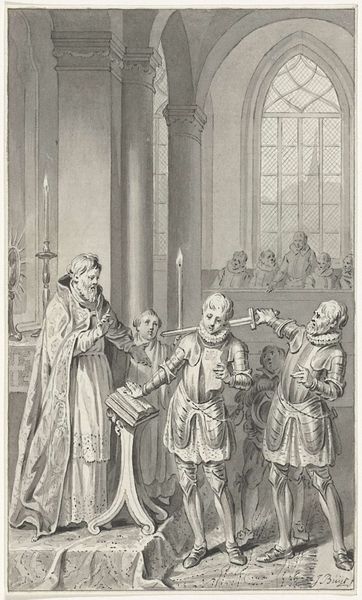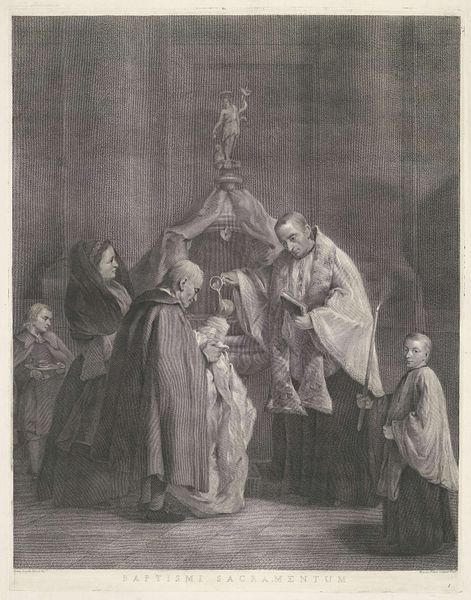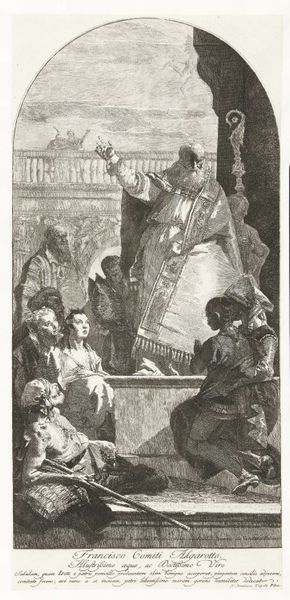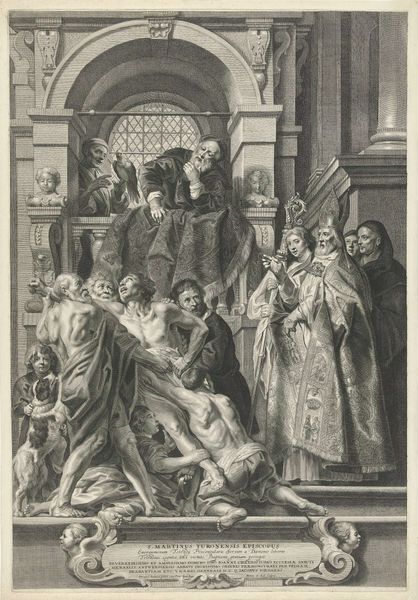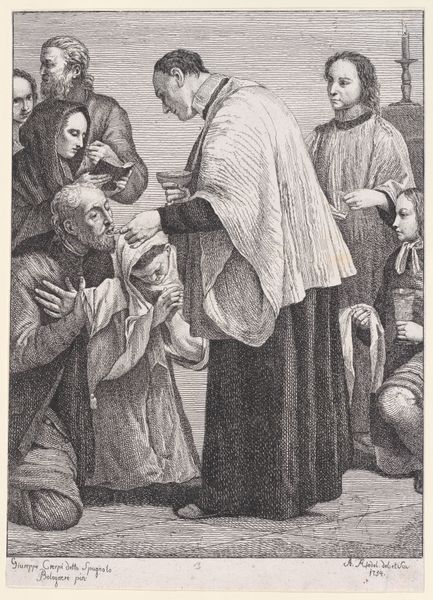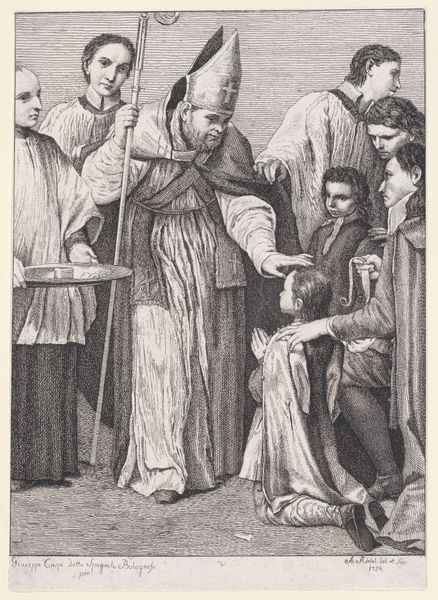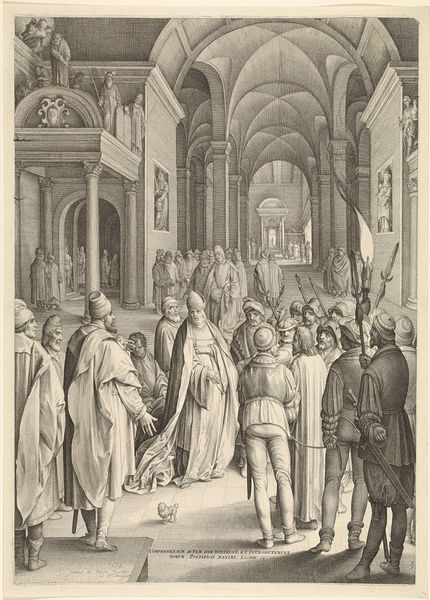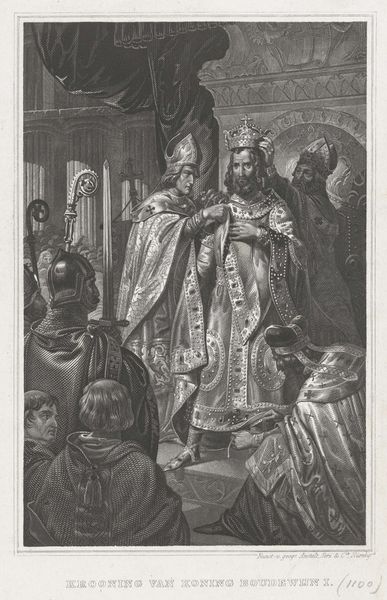
print, engraving
#
pencil drawn
# print
#
pencil sketch
#
charcoal drawing
#
figuration
#
charcoal art
#
pencil drawing
#
history-painting
#
italian-renaissance
#
engraving
Dimensions: height 575 mm, width 448 mm
Copyright: Rijks Museum: Open Domain
Curator: Giovanni Marco Pitteri, working somewhere between 1712 and 1786, gave us this intriguing print, "Het sacrament van de priesterwijding," translated to “The sacrament of priestly ordination." It looks like an engraving. Editor: Immediately, it feels like hushed reverence. All those carefully etched lines… it's not just documentation, there's a definite attempt at imbuing the scene with solemnity. All the robes... feels like a heavy ritual! Curator: It absolutely is! Images like these served a key function in disseminating religious teachings and solidifying the Church’s power during a period of reform and Enlightenment challenges. The strategic circulation of these prints would’ve reaffirmed their presence and beliefs. Editor: I imagine this being printed on a bunch of pamphlets! What really grabs me are the gazes. So focused. And then you have those who are looking on... a mix of earnest observation and maybe even a bit of nervous excitement. That novice being ordained must have such complex feelings. Curator: Indeed. This print reflects a visual language intended to inspire, yes, but also to subtly convey social order and the ordained roles. Notice the height difference as a hierarchical indication of authority; all encoded through line and composition. Editor: Makes you wonder how someone outside of this immediate environment interpreted this! Did the gravitas come through? Did they consider how the depiction relates to lived experience, versus, you know, propaganda? Curator: Precisely the critical lens we must apply! Think of the accessibility of print versus other means of displaying images: this also allowed greater access among wider communities of believers, at the time. Editor: Makes sense. Pitteri wasn’t just making art, he was shaping perspectives on power, and participation within the Church... even, if indirectly, encouraging social expectations within that framework. It really highlights the subtle power of imagery in shaping cultural ideals. Thanks for pointing that out! Curator: An image opens doors to questions beyond mere aesthetic appreciation! Now that we know the broader purpose, its impact transcends religious history and touches upon social psychology and art's part in historical narratives.
Comments
No comments
Be the first to comment and join the conversation on the ultimate creative platform.
